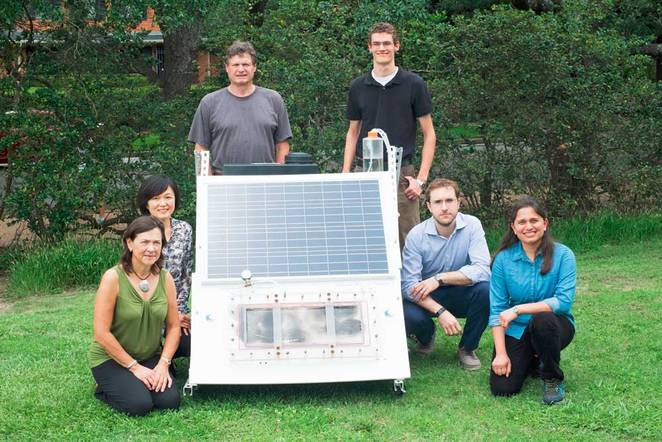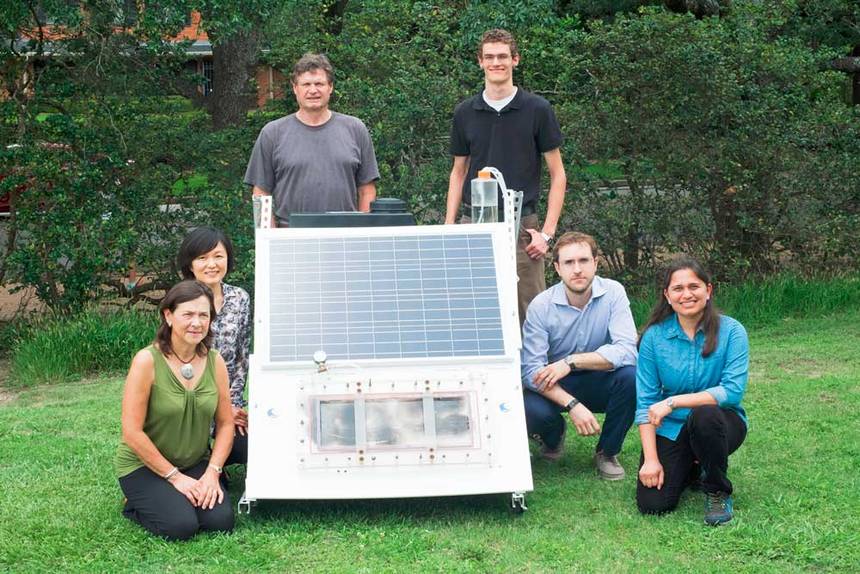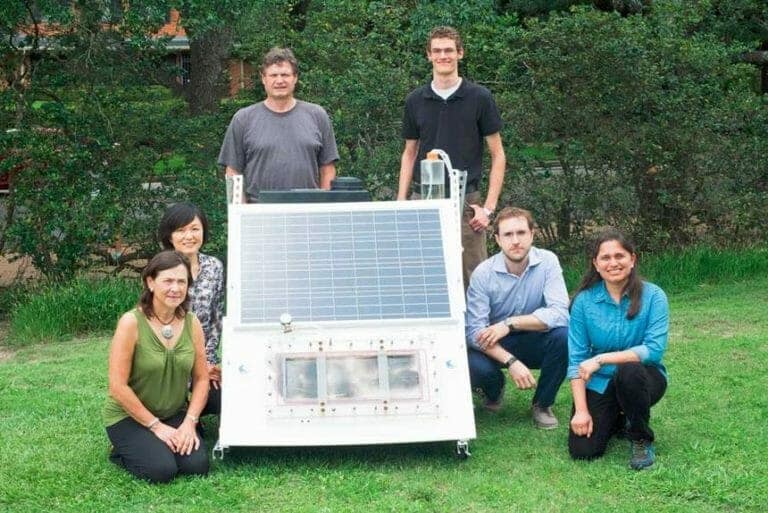More than 18,000 desalination plants operate in over 150 countries, but these aren’t helping the estimated 1 billion people who lack access to safe drinking water, or the 4 billion who suffer water scarcity at least one month per year.
Many desalination plants use distillation processes, which require heating water to boiling temperature and harvesting the purified water vapors, or reverse osmosis, in which strong pumps suck energy to pressurize the liquids. A newer option, membrane distillation, reduces the energy inputs by using saltwater heated to lower temperatures flowing on one side of a membrane while cold freshwater flows on the other.

Vapor pressure differences due to the temperature gradient transport water vapor out of the saltwater across the membrane, where it condenses in the cool water stream. In traditional membrane distillation, there is still a lot of heat lost, as the cool water constantly draws heat away from the warmer saltwater. And the saltwater is cooling constantly as it flows along the membrane, making the technology inefficient to scale up in size. Enter the researchers of the Rice University-based multi-institutional Center for Nanotechnology Enabled Water Treatment (NEWT). They have integrated nano-particles of carbon black into a layer […]
Full article: New solar technology promises safe drinking water in a compact off-grid footprint
More about desalination applications:
Pioneering solar-powered greenhouse to grow food without fresh water
Opinion: Desalination plant in Southern California is important to water security
66-year-old Alan Turing paper inspires new water-purification technique



